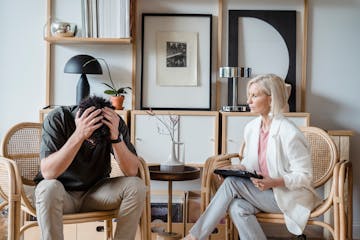Microphobia, also known as phobia of small objects, is a little-known anxiety disorder that can have a significant impact on the daily lives of those who suffer from it. This phobia is characterized by an intense and irrational fear of tiny objects, such as insects, needles, pins, seeds, grains of sand or other small items. In this article, we will explore in depth the symptoms, causes, and possible treatments for microphobia.
Symptoms of Microphobia
Symptoms of microphobia can vary in intensity from one person to another, but in general, those who suffer from this phobia experience a disproportionate fear or anxiety response to small objects. Some of the most common symptoms include:
Phobia of Small Insects
Those who suffer from microphobia often experience an extreme fear of tiny insects, such as spiders, ants, flies or mosquitoes. The simple sighting of one of these insects can trigger a panic reaction, causing physical symptoms such as tachycardia, sweating, tremors or difficulty breathing.
Fear of Needles or Pins
Another common symptom of microphobia It is the intense fear of needles or pins. People who suffer from this phobia may avoid situations in which they have to face these tools, such as vaccinations or sewing, and may experience an extreme anxiety response just by thinking about them.
Rejection of Seeds or Grains of Sand
Microphobia can also manifest as a rejection of objects as small as seeds or grains of sand. When touching, seeing or even imagining these tiny items, the affected person may experience an intense feeling of disgust, fear or disgust.
Causes of Microphobia
The exact causes of microphobia are not completely clear. , but it is believed that a combination of genetic, environmental factors, and past experiences may play a role in the development of this phobia. Some possible causes include:
Traumatic Experiences
Traumatic events involving small objects, such as being stung by a poisonous insect or injured by a needle, can trigger the development of microphobia. These experiences can create negative associations with tiny objects and cause an irrational fear of them.
Genetic Factors
It has been suggested that genetic predisposition to anxiety and phobic disorders may increase the likelihood of develop microphobia. If there is a family history of phobias or anxiety disorders, a person may be more likely to develop this phobia.
Observational Learning
Observational learning may also play a role in the acquisition of microphobia . If a child sees a family member or friend react with fear to small objects, it is possible that they internalize that fear and reproduce it in their own behavior, thus developing the phobia.
Treatment of Microphobia
Fortunately , microphobia is treatable and there are various therapeutic options that can help people overcome their irrational fear of small objects. Some common approaches to treating microphobia include:
Cognitive Behavioral Therapy
Cognitive behavioral therapy (CBT) is one of the most effective approaches to treating phobias, including microphobia. Through CBT, patients learn to identify and question their irrational thoughts about small objects, as well as gradually confront them to reduce their fear.
Gradual Exposure
Gradual exposure is a therapeutic technique that involves progressively exposing the patient to small objects that cause fear, allowing them to learn to manage anxiety and panic in a controlled manner. Over time, repeated exposure can help decrease the intensity of the phobia.
Eye Movement Desensitization and Reprocessing (EMDR) Therapy
Eye Movement Desensitization and Reprocessing (EMDR) Therapy is another treatment option that has been shown to be effective for phobias. Through bilateral stimulation of the cerebral cortex, this therapy helps reprocess traumatic memories associated with small objects, thereby reducing fear and anxiety.
A Few Last Words
In summary, microphobia is an anxiety disorder characterized by an irrational fear of small objects, such as insects, needles, or seeds. Symptoms can vary in intensity, but in general, those who suffer from this phobia experience a disproportionate fear response to tiny objects. If you think you may have microphobia, it is important to seek professional help to address your fears and improve your quality of life.
Remember that a phobia of small objects does not have to control your life. With the right treatment and the necessary support, you can learn to overcome your fears and live more fully and free of anxiety. Don't hesitate to consult a mental health professional if you need help overcoming microphobia and regaining your emotional well-being.
Author: Psicólogo Rafael Gómez


